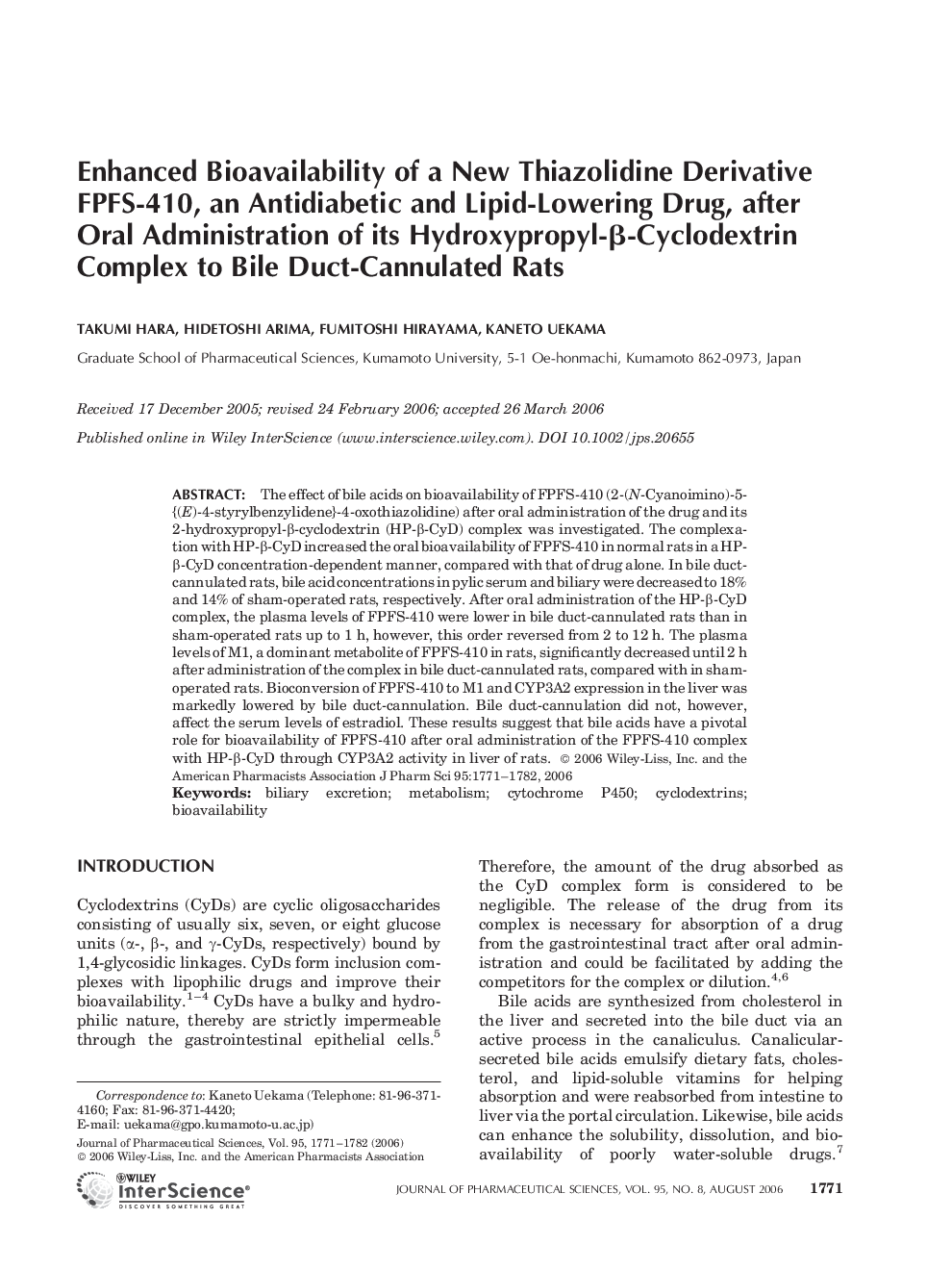| Article ID | Journal | Published Year | Pages | File Type |
|---|---|---|---|---|
| 2487894 | Journal of Pharmaceutical Sciences | 2006 | 12 Pages |
Abstract
The effect of bile acids on bioavailability of FPFS-410 (2-(N-Cyanoimino)-5-{(E)-4-styrylbenzylidene}-4-oxothiazolidine) after oral administration of the drug and its 2-hydroxypropyl-β-cyclodextrin (HP-β-CyD) complex was investigated. The complexation with HP-β-CyD increased the oral bioavailability of FPFS-410 in normal rats in a HP-β-CyD concentration-dependent manner, compared with that of drug alone. In bile duct-cannulated rats, bile acid concentrations in pylic serum and biliary were decreased to 18% and 14% of sham-operated rats, respectively. After oral administration of the HP-β-CyD complex, the plasma levels of FPFS-410 were lower in bile duct-cannulated rats than in sham-operated rats up to 1 h, however, this order reversed from 2 to 12 h. The plasma levels of M1, a dominant metabolite of FPFS-410 in rats, significantly decreased until 2 h after administration of the complex in bile duct-cannulated rats, compared with in sham-operated rats. Bioconversion of FPFS-410 to M1 and CYP3A2 expression in the liver was markedly lowered by bile duct-cannulation. Bile duct-cannulation did not, however, affect the serum levels of estradiol. These results suggest that bile acids have a pivotal role for bioavailability of FPFS-410 after oral administration of the FPFS-410 complex with HP-β-CyD through CYP3A2 activity in liver of rats.
Related Topics
Health Sciences
Pharmacology, Toxicology and Pharmaceutical Science
Drug Discovery
Authors
Takumi Hara, Hidetoshi Arima, Fumitoshi Hirayama, Kaneto Uekama,
